DELHI
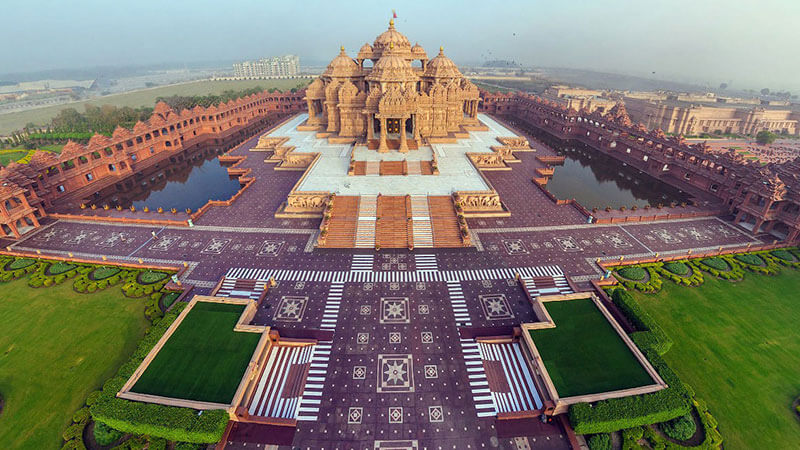
Delhi, the ancient city of India, situated on the banks of the Yamuna River, which was known as Indraprastha in the Mahabharata period and is currently the capital of India, is truly a city of heartbroken people. After independence in 1947, due to the migration of people of different provinces, religions and castes to Delhi, Delhi was urbanized and a mixed culture was born here. Today Delhi is a major political, cultural and commercial centre of India.
Delhi is not only the capital of India but it is also a main centre of tourism. Many world-famous constructions certified from archaeological point of view are considered as centres of attraction here.
The mixed culture here honours all the religions of the world. On one side there are historical royal buildings such as the Red Fort, Purana Qila, Safdarjung’s Tomb, Jantar Mantar, Qutub Minar, Humayun’s Tomb, Nizamuddin Auliya, Iron Pillar (the culmination of ancient Indian metallurgy) equipped with ancient Hindu and Mughal style.
On the other hand, there are many world-famous constructions like famous religious places and monuments of all religions – Birla Mandir, Swaminarayan Akshardham Temple, ISKCON Temple, Adya Katyayini Shaktipeeth, Bangla Saheb Gurdwara, Bahai Temple, Jama Masjid, Raj Ghat, Raj Path and India Gate. Which shows the culture, architecture, spirituality and religious unity here.
The mixed culture here honours all the religions of the world. On one side there are historical royal buildings such as the Red Fort, Purana Qila, Safdarjung’s Tomb, Jantar Mantar, Qutub Minar, Humayun’s Tomb, Nizamuddin Auliya, Iron Pillar (the culmination of ancient Indian metallurgy) equipped with ancient Hindu and Mughal style. On the other hand, there are many world-famous constructions like famous religious places and monuments of all religions – Birla Mandir, Swaminarayan Akshardham Temple, ISKCON Temple, Adya Katyayini Shaktipeeth, Bangla Saheb Gurdwara, Bahai Temple, Jama Masjid, Raj Ghat, Raj Path and India Gate. Which shows the culture, architecture, spirituality and religious unity here.
Being the capital, many offices of the Government of India, Rashtrapati Bhavan, Parliament House, Central Secretariat etc. can be seen here. There are many markets, such as Connaught Place, Chandni Chowk and many delightful gardens, such as the Mughal Gardens, Garden of Five Senses, Talkatora Gardens, Lodi Gardens, Zoo, etc., which captivate the visitors to Delhi.
Exploring the city of Delhi is like a mini-India, in which Delhi tourism is a reflection of India’s rich culture. Synonymous with diversity, Delhi has always been the hub of all activities in India, which is reflected in its tourism. Though 1-2 days is enough to visit Delhi, but 10 days are also less to understand this historical city.
BEST TIME TO VISIT DELHI:
According to the climate, winter is the most suitable time to visit Delhi, but to avoid the weather, all the resources are available here in abundance, so tourism remains here throughout the year.
In this city of hearted peoples, the entire team of NIBT HOLIDAYS and HELLO HOTELS INDIA heartily welcome all the guests and promises to deliver an unforgettable world class hospitality.
AGRA
The historical and ancient city of India, Agra is located on the banks of the Yamuna River in North India. Agra is a majestic city which is about 230 kilometres from the national capital New Delhi and is included in the Golden Triangle Tourist Circuit along with Delhi and Jaipur. Agra is a major tourist destination due to its many Mughal buildings, especially Taj Mahal, Agra Fort and Fatehpur Sikri (which are also included in UNESCO World Heritage). Apart from this, many more historical and religious sites of this city like Akbar’s Tomb, Mankameshwara Temple, Swami Bagh, Ram Bagh, Mehtab Bagh, Guru Ka Taal, Paliwal Park, Maryam Tomb etc. welcome their visitors from all over the world. The climate here is extreme, with elevations up to 3 degrees Celsius in winter and 44 degrees in summer.
Plan your trip from NIBT HOLIDAYS and enjoy the magnificent beauty of Agra.

RAJASTHAN
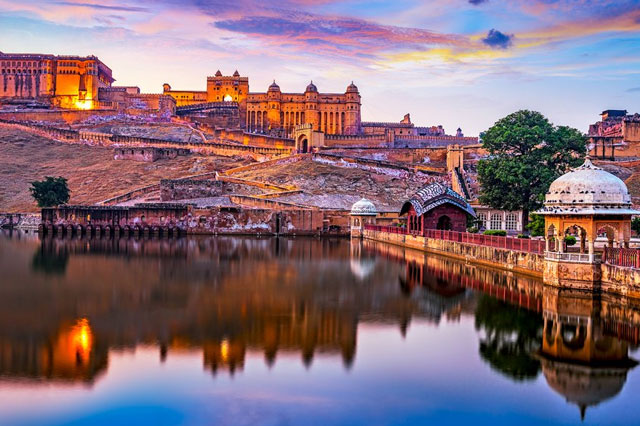
The word Rajasthan means: ‘place of kings’ because Ahir, Gurjars, Rajputs, Mauryas, Jats etc. have ruled here since ancient times. After independence, the powerful princely states of erstwhile Rajputana merged and this state developed in a democratic manner.
This beautiful state of colourful culture is famous worldwide for its hospitality. Visitors are greeted with traditional tilak and flowers at most places here, and traditional folk songs and folk dances are also presented in hospitality, which signifies the existence of the local culture. The traditional food here (dal baati and churma, gatta ki sabji, keri sangri, lal / white maas, mawa kachori, ghevar, dilkushar, etc.) brings water to the guests’ mouth and they cannot live without eating it.
From the magnificent havelis of Jaipur, to the lakes of Udaipur, from the mosques and temples to Jaisalmer and the sand dunes of Bikaner, everything here is enchanting and historical. The major tourist places of Rajasthan will make you crazy. You will be forever captivated by seeing the beautiful handicraft and luxurious havelis here.
Rajasthan is beautifully synonymous. Come here and live full of its natural beauty and amazing art performances. Every city here will tell you about its culture. The names of the major cities and tourist places of Rajasthan are – Jaipur, Ajmer, Jodhpur, Udaipur, Jaisalmer and Mount Abu which are rich in its culture. Consider the list of tourist places in Rajasthan, then see, you will not be able to stop yourself from coming here:
JAIPUR
The Pink City of Jaipur, which is also the capital of Rajasthan, was established in 1727 by Raja Jai Singh of Amer. The city is surrounded by beautiful Aravali ranges on three sides. The city is identified with pink dholpuri stones in its palaces and old houses, which is a specialty of its architecture. In 1876, the then Maharaja Sawai Ramsingh decorated the entire city in pink with the reception of Queen Prince of Wales Crown Prince Albert of England. The city has been named Pink City since then.
Located within equal and triangular distance from Delhi and Agra, the city is also a part of the Tourist Circuit Golden Triangle Tour of India. Jaipur is recognized as a World Heritage City in July 2019 by UNESCO for its rich building construction tradition, Saras-culture and historical significance. The main industries here include import-export of metals, marble, textile-printing, hand-art, gems and jewellery etc.
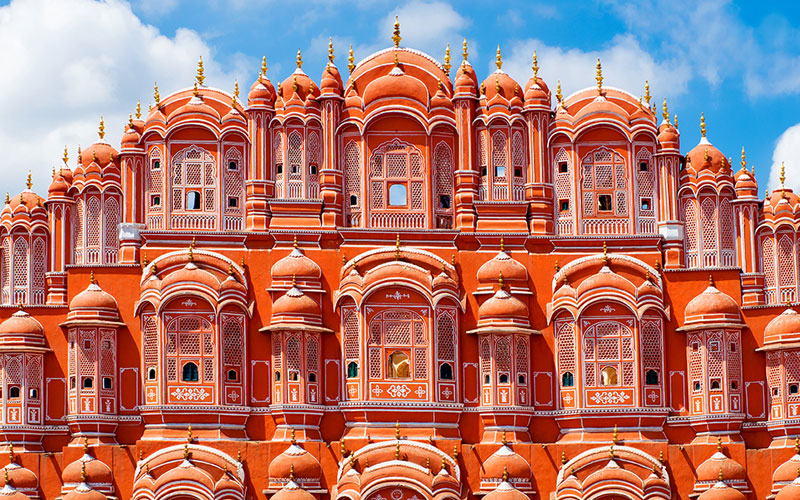
Jaipur city has many tourist attractions such as Hawa Mahal, Jal Mahal, Jantar Mantar, City Palace, Amer Fort, Govinddevji’s Temple, Sri Laxmi Jagdish Maharaj Temple, BM Birla Taramandal, Jaigarh Fort, etc. which are also a historical heritage. Shops in the vibrant markets of Jaipur are full of colorful items, including handloom products, precious stones, handicraft made of vegetable dyes, Meenakari jewelery, brass decorative items, Rajasthani painting patterns, Nagra-Mojari shoes, blue pottery, Ivory handicrafts and white marble sculptures etc. Famous markets include Johri Bazaar, Bapu Bazaar, Nehru Bazaar, Wide Rasta, Tripolia Bazaar and M.I. There are markets along the road.
AJMER

Ajmer is a metropolitan and historical city of Rajasthan located on the hillside of the Taragarh hill in the Aravalli mountain range. The city of Ajmer was founded by Raja Ajay Pal Chauhan in the 7th century. The city has many ancient sights and monuments for tourists such as Tejgarh Fort, Taragarh Fort, Adi-Din Ka-Jompara, Moinuddin Chisti Dargah and Jain Temple Pushkar Lake, Pushkar Brahma Temple, Manibandha / Chamunda Mata Temple, Ajmer Sharif The Dargah is famous for the rivers of Soniji, Mayo College, Akbari Fort and Museum, Nareli Jain Temple, Ana Sagar Lake, Foysagar Lake, Prithviraj Memorial etc.
PUSHKAR
Pushkar is the oldest city in Ajmer district, which is one of the five holy shrines. The origin of Pushkar is described in the Padmapurana. It is said that Brahma had come here and performed the sacrifice. Among the major pilgrimage centers of Hindus, Pushkar is the only place where the temple of Brahma is established. Apart from the temple of Brahma, there are temples of Savitri, Badrinarayan, Varaha and Shiva Atmeshwara, but they are modern. The ancient temples here were destroyed by the Mughal emperor Aurangzeb. India’s largest camel fair is held here in November, where crafts made items are available at cheap prices at small colorful shops. Known for artistic cottage-textile industry, wood painting, and animal trading, this religious city and its culture attracts tourists.
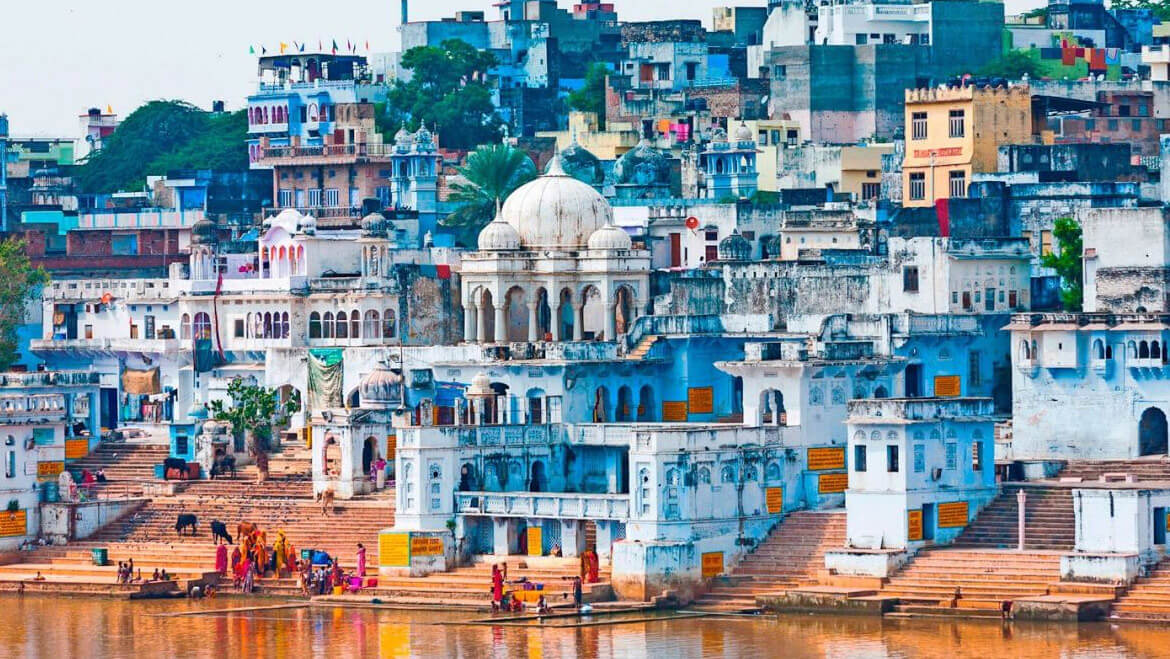
JODHPUR
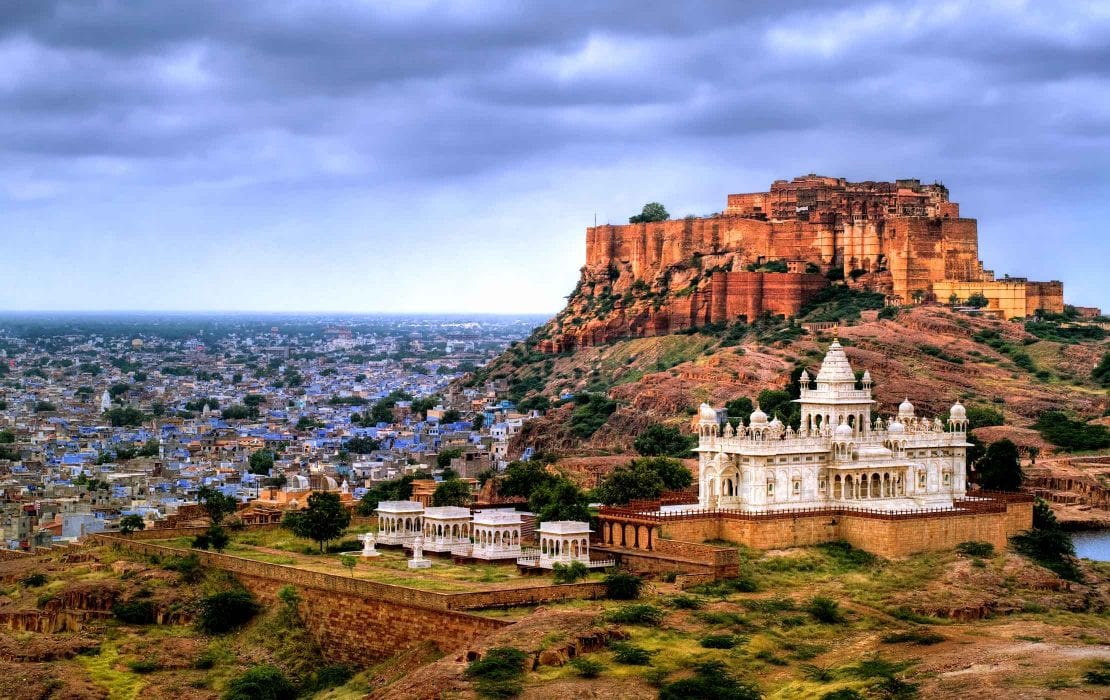
Jodhpur is the second largest city of Rajasthan. Rao Jodha founded the modern city of Jodhpur on May 12, 1459 AD. Jodhpur is famous for magnificent palaces, fortifications and temples amidst the Thar Desert. The city of Jodhpur, popularly known as Surya Nagari, is identified by the stones scattered in its palaces and old houses. The High Court of Rajasthan is also known as the judicial capital of Rajasthan, being located in Jodhpur. Apart from this, international airport is also available in Jodhpur to connect with the whole world. The major sightseeing places of Jodhpur include Mehrangarh Fort (Mehrangarh Fort), Jaswant Thada (full marble built), Umaid Bhawan, Girdikot Bazar, State Museum etc. Apart from this, the nearby places of the city like Balasamand Lake, Mandore Garden, Mahamandir, Kayalana Lake, Osian, Luni Fort etc. are also favorite places of tourists.
UDAIPUR
Udaipur, called the city of lakes, was founded in 1559 by Maharana Udai Singh II. Surrounded by Aravalli mountains and four lakes, the city is a symbol of natural beauty. The beautiful lakes and stunning architecture of Udaipur make you greedy to visit this city. While riding a boat in Lake Pichola, you will feel that the most beautiful thing in nature is near you. The name of this city comes first in the Rajasthan main attraction.
The main sights of Udaipur city – Pichola Lake, Jag Niwas Island, Jag Mandir, City Palace, Shilpgram, Sajjangarh (Monsoon Palace), Fateh Sagar, Moti Magri, Bahubali Hills, Saheliyon Bari, Vintage Car Museum, Doodh Talai Musical Garden, Jaisamand Lake etc. For those staying longer, there are many other places of interest around this city like – Nathdwara, Kumbhalgarh, Kankroli, Rishabhdev, Eklingji, Haldighati, Jaisamand Lake, Ranakpur, Chittorgarh, Jagat, Menar etc. which entice tourists.
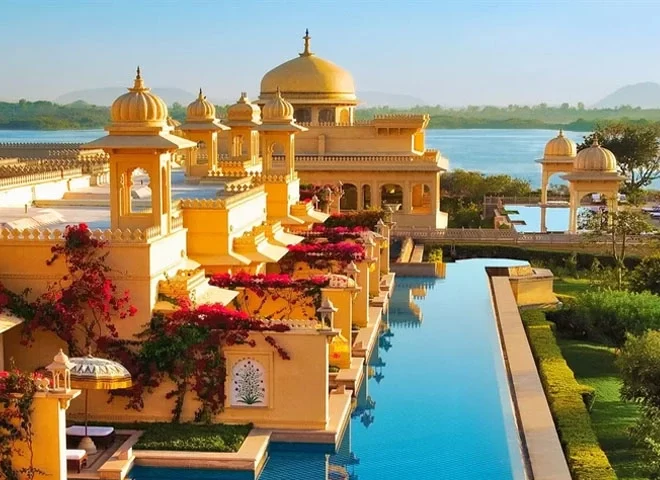
JAISALMER
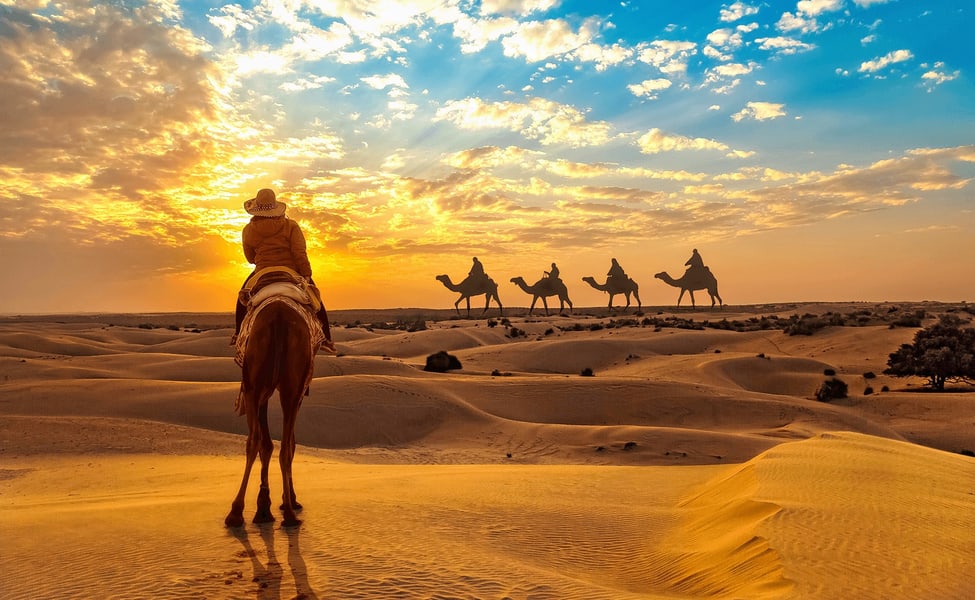
The city of Jaisalmer was built in 1156 AD by a Bhati Rajput ruler Jaisal on top of the Trikura hill. Jaisalmer Fort is considered as the pride of Jaisalmer. Because this yellow sandstone fort shines like gold at sunset, this fort is also known as the ‘Golden Fort’
Located in the Thar Desert near the border of Pakistan, this city is a popular tourist destination of Rajasthan. There are many historical sites here which are made of golden yellow limestone. It is a memorable experience to enjoy a camel ride in the desert and spend the night enjoying the bonfire and cultural fog music in the camp below the open sky.
Important Attractions of Jaisalmer – Golden Fort, Jain Temple, National Park, Gadisar Lake, Bada Bagh, Patwans Ki Haveli, Salim Singh Ki Haveli, Kuldhara Village, Amar Sagar Lake, Desert National Park, Tazia Tower, Vyas Chhatri, Indo-Pak Border Etc.
MOUNT ABU
Mount Abu is the only mountainous region of Rajasthan. Due to the green and cool environment, most couples also come here for a romantic honeymoon with their wife and enjoy the sight of boating in Nakki Lake and watching the sunset from Sunset Point. The Dilwara temple here is a symbol of historicism and incomparable architecture, which is very famous all over India. Apart from this, Achalgarh Fort, Nakki Lake, Gomukh Temple, Mount Abu Wildlife Sanctuary etc. are also worth visiting.
Mount Abu is also known as a romantic destination for loving couples.
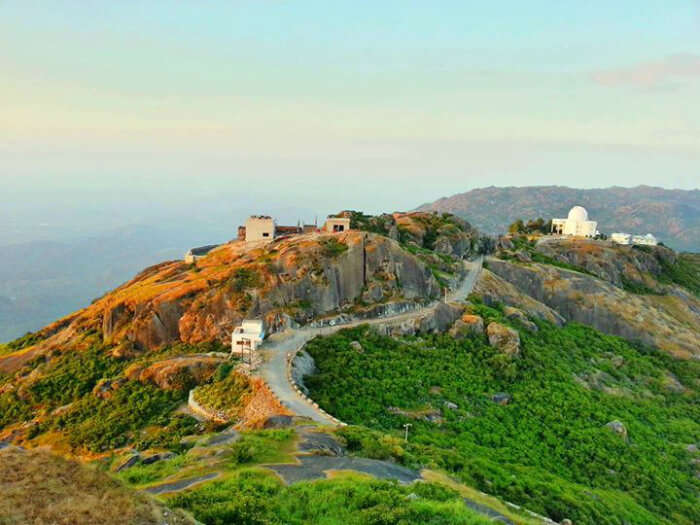
UTTRAKHAND
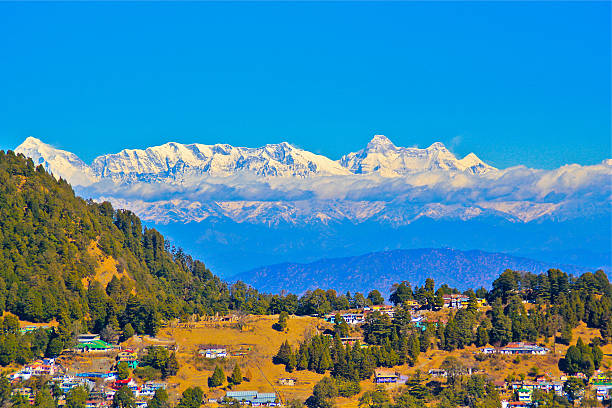
The beautiful Uttarakhand situated in the northern part of India is known for its mixed natural environment of Himalaya, Bhabar and Terai regions. It is also often referred to as “Devbhoomi” (literally “Land of the Gods”) due to its religious importance and the many Hindu temples and pilgrimage centers found throughout the state. Devbhoomi Uttarakhand formed in the year 2000 after being separated from the large state of Uttar Pradesh. The state borders China’s Tibet Autonomous Region to the north, Nepal’s Sudurpashim Province to the east, Uttar Pradesh to the south, and Himachal Pradesh to the northwest. The state is divided into two divisions, Garhwal and Kumaon, with a total of 13 districts.
The native inhabitants of the state are usually called Uttarakhand’s, or more specifically either Garhwali or Kumaoni from their region of origin. According to the 2011 Census of India, Uttarakhand has a population of 10,086,292, making it the 20th most populous state in India.
The state also finds mention in history as a part of the Kuru and Panchala kingdoms (Mahajanapadas) during the Vedic age. In Hindu mythology also, Uttarakhand is recognized as part of the famous Kedarkhand (now Garhwal) and Manaskhand (Kumaon). It is also believed that the famous sage Vyasa composed the epic of Mahabharata in Uttarakhand.
The residents of Uttarakhand are known for their simple lifestyle, honesty and humility. Uttarakhand culture still revolves around its traditional morality, moral values, simplicity of nature and a rich mythology associating an honest bond with nature and gods.
The people of Uttarakhand are divided into two regions. Apart from these two major inhabitants, Kumaoni (inhabitants of Kumaon region) and Garhwali (inhabitants of Garhwal region), Uttarakhand is also home to ethnic groups such as Bhotia, Jaunsari, Tharu, Boksh and Raji. The two main languages of Uttarakhand are Kumaoni and Garhwali whose speaking style and pronunciation varies from village to village, besides Hindi, Urdu and Punjabi are also widely spoken.
People of Uttarakhand perform festivals and rituals throughout the year because of their deep collection and rich mythology with nature. Like their simple lifestyle, festivals and fairs in Uttarakhand are culturally rich as well as simple. Every season in Devbhoomi Uttarakhand is welcomed with heartfelt folk songs and dance. Worship of the ancestor spirit is important for the residents of the state. People here organize Jagar, Jaga Baisi several times a year to honour the deities and ancestors which are accompanied by full dhol, nagare, hudka (a special hill tune played to invoke the deity) to solve their problems.
Dances like Barda Nati, Bhotia dance, Chancheri, Chhapeli, Cholia dance, Jagar, Jhora, Langveer dance, Pandava dance, Ramola, Shotiya tribal folk dance, Thali-jadda and Jhanjhata are performed on various occasions in Uttarakhand. The primary role of women is seen during festivals as they are involved in preparing traditional dishes and singing folk songs. Traditionally dressed in a ghagra-choli with a rangwali (veil), these women look graceful and their beauty is further enhanced with large nose rings made of gold. Truly, every day is a day of celebration in Uttarakhand; Great and humble people take great pleasure in celebrating even a small success with a grateful heart.
Due to its unbeatable charm and natural structure, Uttarakhand is a center of attraction for all types of tourists. Although this beautiful state is visited by tourists throughout the year, but it is the best option in North India to spend the summer holidays. The Himalayan peaks, lush green meadows, huge gorges of flowers, holy rivers, world famous lakes, dense forests, attractive villages, countless wildlife and many more mesmerizing places are pleasing to every visitor in Uttarakhand. A complete holiday destination state that offers visitors high peaks to climb, thrilling rivers to enjoy water sports, dense forests for wildlife viewing, ancient temples for worship, countless sites for adventure activities and luxurious accommodation. Uttarakhand is undoubtedly a treasure trove where the deeper you dig, the more jewels you find. Chosen primarily by Hindu and Sikh devotees to undertake the pilgrimage, Uttarakhand is a must visit for an out of this world spiritual experience. Indeed, it is a place where the river Ganges washes away your sins, and Lord Shiva and Badri listen to your prayers while seated on their high thrones at Vishal Badrinath and Kedarnath. Seek out the might of the Yamuna River here at Yamunotri Dham and the sparkling Ganges at Gangotri and Devprayag. Be a part of the world’s largest human gathering at the Kumbh Mela in Haridwar and don’t forget to seek blessings as a Hindu devotee at the mysterious Paatal Bhubaneshwar; The ancient Jageshwar temple complex and Kartik Swami Temple, where you can also enjoy spectacular views of the snow-capped Himalayas.
Although the whole of Uttarakhand itself is like heaven on earth, there are some attractive places where most of the tourists visit.
Tourist places of Garhwal Division: Haridwar, Rishikesh, Mussoorie, Dhanaulti, Chamba, Chopta, Tehri Dam, Kanatal, Lansdowne, Kedar Kanth, Kedarnath, Badrinath, Joshi math and Auli.
Tourist places of Kumaon Division: Jim Corbett, Nainital, Bhimtal, Saat Tal, Naukuchia Tal, Mukteswar, Pangot, Almora, Ranikhet, Kausani, Binsar, Jageshwar, Panchachuli, Pindari Glacier, Munsiyari, Chakudi, Pithoragarh etc.
HIMACHAL & PUNJAB
Situated in northern India amidst the lower Himalayan ranges, Himachal Pradesh is a breathtaking state that is an idyllic amalgamation of lush green valleys, glacial mountains, dense forests and clear rivers. Apart from this, the rich culture, delicious food, adventure sports, and colonial past attracts all tourists here. A complete treat for adventure seekers, families, honeymooners and solo travelers, the state’s many cities have a lot to offer for tourists and locals alike.
The earliest known inhabitants of the region were tribals called slaves. Later, the Aryans came and assimilated into the tribes. In later centuries, the hill chieftains accepted the suzerainty of the Maurya Empire, the Kausanas, the Guptas and the Kanauj rulers. During the Mughal period, the kings of the hill states made certain mutually agreed arrangements that governed their relations. In the 19th century, Ranjit Singh annexed many states. When the British came, they defeated the Gurkhas and made treaties with some kings and annexed the kingdoms of others.
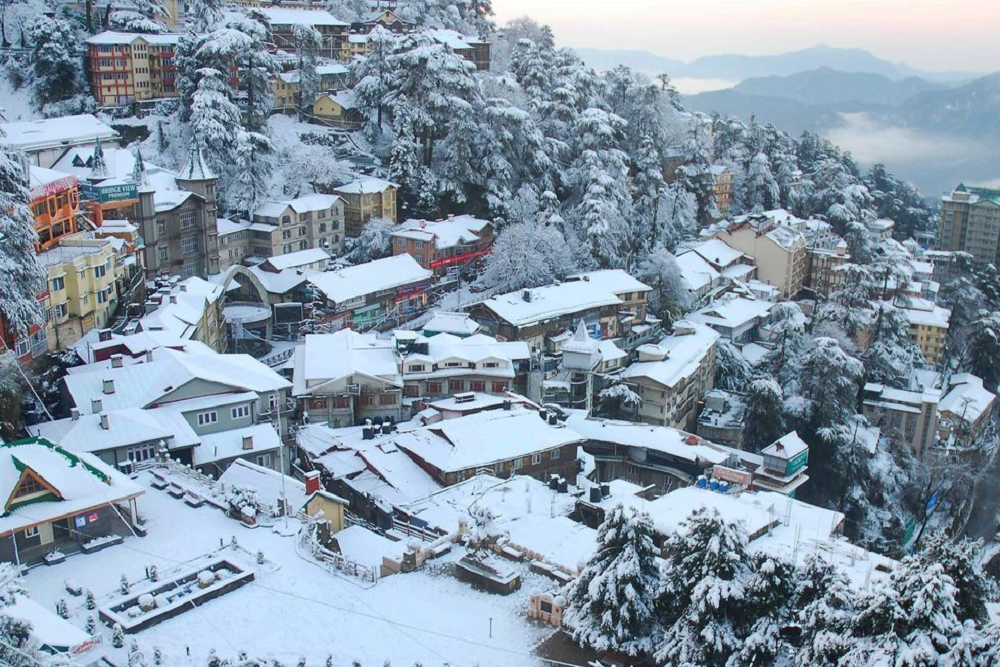
The situation remained more or less unchanged until 1947. After independence, 30 princely states of the region were united and Himachal Pradesh was formed on April 15, 1948. With the recognition of Punjab on November 1, 1966, there were also some territories related to it.
Himachal Pradesh is included. Himachal Pradesh was made a full-fledged state on 25 January 1971. The state is bordered by Jammu and Kashmir in the north, Punjab in the west and south-west, Haryana in the south, Uttarakhand in the south-east and China in the east.
Presently the capital of this state is Shimla city which was once the summer capital of British India. As evidenced by many attractions from the colonial period, including The Ridge. Manali is one of the most visited cities of Himachal which experiences snowfall during winters, which attracts huge crowds. Tourists flock to Solang Valley and Rohtang Pass as they are famous for trekking, paragliding, skiing, horse riding and other adventure sports. The state is easily accessible by road, whether in a car, cab or bus, via railways and sometimes by flight.
For a touch of Buddhist culture, Mcleodganj is an ideal destination as it is the abode of the holy Dalai Lama and houses beautiful Tibetan temples and institutions. Dalhousie, another hill station with a colonial past, is a paradise for nature lovers with waterfalls, vast meadows, dense forests, misty mountains and much more. Lastly, Kasol, known as the “Amsterdam of India”, is a more off-beat destination in Himachal that is mainly famous among adventure lovers who come here for trekking and camping.
Himachal Pradesh is a state rich in culture and traditions, whether in terms of art, cuisine or festivals. Tourists can explore its many markets for Pashmina shawls, Himachali caps, Chamba handkerchiefs, jewelry, metal works, etc. Any visit to the state would be incomplete without tasting some of its delicacies like dham, madra, chha gosht and many more Tibetan delicacies. And undoubtedly it will be an unforgettable experience to witness some of the most famous festivals of Himachal like Kullu Dussehra, which is a week-long affair.
Book your Himachal package with Nibat Holidays, explore this beautiful state, live in the culture and make your trip a memorable one while having tons of fun.
ABOUT PUNJAB
Punjab, the state of India, is located in the northwestern part of the subcontinent and is home to one of the world’s oldest and richest cultures. It is bounded by the Union Territory of Jammu and Kashmir to the north, the state of Himachal Pradesh to the northeast, the state of Haryana to the south and southeast, and the state of Rajasthan to the southwest and the country of Pakistan to the west. Punjab came into existence in its present form on November 1, 1966, when its predominantly Hindi-speaking regions were carved out of the new state of Haryana. The city of Chandigarh, within the Chandigarh Union Territory, is the joint capital of Punjab and Haryana.
The diversity and uniqueness of Punjab is evident in its poetry, philosophy, spirituality, education, artistry, music, cuisine, science, technology, military warfare, architecture, traditions, values and history.
The geographical location of Punjab in relation to the rest of the subcontinent means that the region has Central Asian influence in both its culture and cuisine. Punjabi cuisine has become a world-leader in the field; So much so that many entrepreneurs investing in this area have made huge personal fortunes because of its popularity. “Sarso Ka Saag” and “Makki Di Roti” are examples of well known and very famous dishes.
Punjab, popularly known as the ‘Land of the Five Rivers’, is located in the north western part of India. This fertile land is one of the oldest civilizations in the world. Punjab is also famous for its religious diversity as many religious movements were started from here. Natural landscape, rich history and famous religious places are the most important reasons for the increasing number of tourists.
With its streets full of history and culture, there is no dearth of places to visit in Punjab. Splendid monuments, scenic parks and stunning temples, a day spent in Punjab is never dull. The historical and religious monuments here are some of the most attractive tourist places in Punjab.
From the charming Golden Temple of Amritsar to the grand Devi Talab Temple of Jalandhar, Punjab’s religious attractions are a must-see. Tourist places to see in Punjab also stand testament to the country’s vibrant past and its quest for independence – with the quaint Jallianwala Bagh, which was the seat of the historic massacre, to the Wagah border that separates India from neighboring Pakistan .
The forts of Punjab are also popular tourist magnets here. While the huge red structure of Amritsar’s Gobindgarh Fort captivates all visitors, the Phillaur Fort in Ludhiana is known for its spectacular display of traditional European architecture. Leisure-seekers can visit the lush, landscaped gardens of Punjab. From the Rock Garden of Chandigarh with its scintillating display of rock sculptures, to the serenity of Zakir Hussain Rose Garden- one is spoiled for choice here.
JAMMU & KASHMIR




